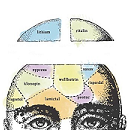A new narrative review published in Neuroscience and Biobehavioral Reviews asks whether worsening youth mental health might be tied to the rising prevalence of neurotoxic chemicals in the food and water supply. The authors, affiliated with Sapien Labs, stop short of proving a direct link but suggest the issue may warrant closer attention.
“The Global Mind Project, a large-scale ongoing research program that measures population trends and drivers relating to mental health and wellbeing, shows that, across the internet-enabled world, nearly 50% of young adults aged 18-24 are mentally distressed or struggling,” the authors write.
The authors aimed to review the associations between neurotoxic exposures from food and water, construed broadly, and various adverse neurodevelopmental outcomes.
They posit increases in these exposures as an explanation for the so-called youth mental health crisis. Starting from the assumption that the crisis in youth mental health has a physiological basis, the authors examined research on pesticides, heavy metals, microplastics, food additives, and packaging chemicals.
They considered studies showing these chemicals’ presence in the environment, their detection in human body fluids, and their associations with altered brain function, developmental delays, and conditions such as ADHD and depression.















